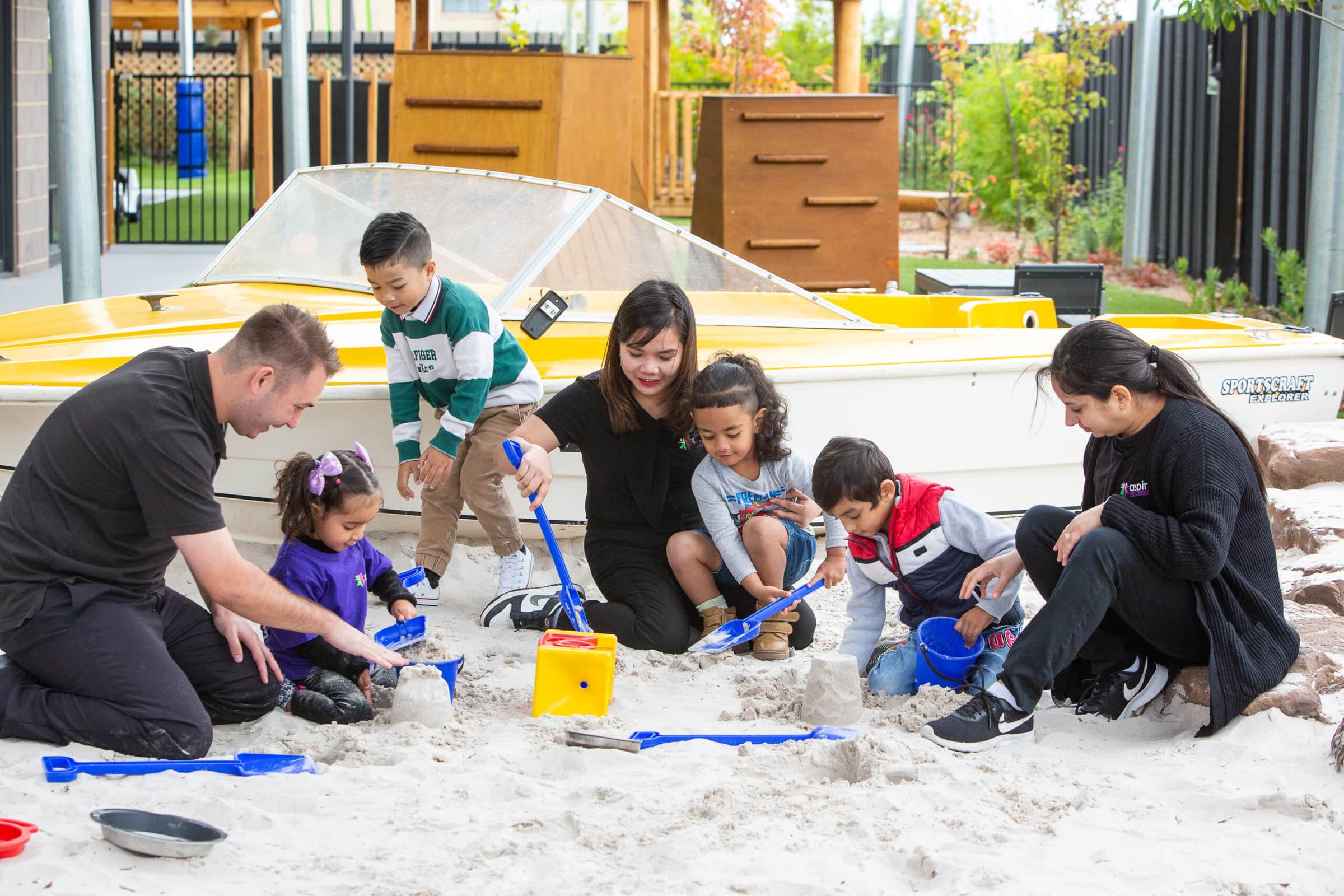Benefits of Sand & Water Play in Early Childhood


If we asked you to think about sand and water, it may lead you to think of the beach. But what if we told you that sand and water were key to learning and development in early childhood.
We know that in the first five years of life, children learn and develop more than at any other stage of their life. Play based learning gives children the opportunity to discover new concepts when they have a variety of activities to explore.
There are multiple benefits of sensory sand and water play in early childhood. There are three main sensory areas that are exercised through sand and water play. Tactile sense relates to your child’s sense of touch, pressure, temperature, and detection of vibration. When a child is playing with sand, they can feel the grains of sand in their hands and feel the warm of sand that is in the sun and the cooler sand in the shade or when it is wet. When playing with water, your child can feel the warmth or coolness of the water and the way water moves through their hands and around them. Vestibular sense is the ability to understand how your body moves and balances over surfaces. When your child is kneeling on the sand and moving to dig and carry sand without falling over, they are strengthening their vestibular sense. When engaging in water sensory play, children will use their vestibular sense when they are running through a sprinkler, leaning over a bucket of water, or floating in a pool. Lastly, our proprioceptive sense is the awareness we have of our body and how it works in our surroundings. When children are playing in a sandpit, stretching, and digging, they are using and improving their proprioceptive sense. Similarly, when playing with water, children use their proprioceptive sense when squeezing water from a sponge, pouring water and splashing.
Sandpits can be messy and not every family will have access to one. Kinetic sand is a great alternative to regular sand. Kinetic sand is recommended for children aged three and up. It is normal sand, coated in silicone oil. Kinetic sand is available to purchase in a variety of colours, which is appealing to children. Kinetic sand is easy to clean up, long lasting, does not dry out or leave residue, non-toxic and is hypoallergenic. Kinetic sand will give your child the same sensory experience and benefits of regular sand, but without the mess!
During play, children are constantly learning and developing. There are a range of benefits of sand play for pre-schoolers. Regarding physical development, sand play is a great way to improve motor skills and strengthen muscles. Fine motor skills are developed when your child learns how to hold a shovel in their hand currently or shape sand with their fingers and gross motor skills are strengthened when they try to dig a whole or lift a bucket full of sand. The same can be said for water play, children improve their motor skills when pouring water, lifting objects full of water, running and splashing.
Sandpit play benefits your child’s social skills, as it is usually a place of collaboration and discussion. Children will learn that to play together, they need to manage the sharing of tools and space and must negotiate when building and playing together. Children will need to decide on what to build and delegate tasks to achieve the final goal. They may experience disagreements when deciding on these plans, but they will also engage in friendly conversations while they play. Children can develop their language and vocabulary by verbalizing and describing what they are building and if they need more or less of something. When children play together in a pool, they will also need to share the space and toys with others and may have discussions about what game they will play together.
Sand play gives children the opportunity to develop their cognitive skills. When children are in a sandpit or have kinetic sand in front of them, they have a blank canvas. They will expand their imagination and creativity by developing innovative ideas. They can use their critical thinking skills to decide how they can complete their creation and what toys or tools they will need to complete the task. If their creation collapses, they will have to problem solve and think of a way to solve the issue. Hand-eye coordination is important for writing, playing sports and a variety of other activities. While building and playing with sand, your child is strengthening their hand-eye coordination. Small tasks such as picking up sand with a shovel requires coordination and concentration. Similarly, when children are involved in water play, they may engage in imaginative games and strengthen their hand eye coordination when playing with toys which they throw to one another or aim to shoot through a hoop or goal. When swimming or playing with a smaller pool of water, they will need to use their coordination and concentration skills when playing with toys or scooping and transporting water.
Sand and water play are not only great for children’s development, but they are also a fantastic way for children to release energy. Playing with sand and water is also emotionally therapeutic and can be used for children to help them relax and de-stress. There are so many new toys and electronics which can be used for learning and development, but it is important to also remember that simple activities like sand and water play are just as, or sometimes more, beneficial for your child’s growth.